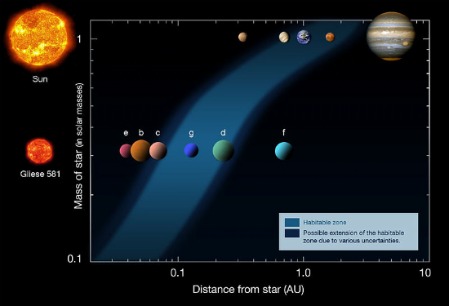Fascinating work in the exo-planet community on the ultimate search for worlds beyond our solar system:
Planet-hunters say they’ve developed a relatively simple method for determining how livable a faraway world might be, and they’ve used the formula to identify a top candidate: a super-Earth that’s 36 light-years away.
Most current detection methods are still limited to planets several times more massive than earth orbiting relatively small stars. But the eclipse method used by NASA’s Kepler observatory and increased sensitive in earth-bound observations offer hope this will be refined, until earth-mass planets circling larger stars are detectable. The next step after that would be obtaining a readable spectrum which could produce the chemical signature of quasi-terrestrial conditions.


Leave a Reply
You must be logged in to post a comment.